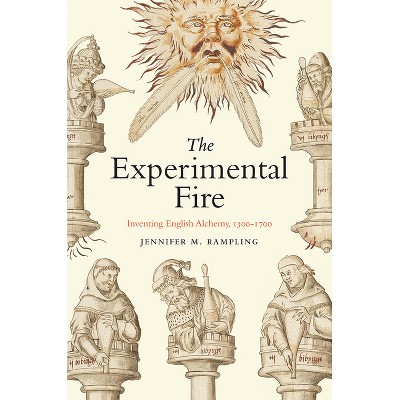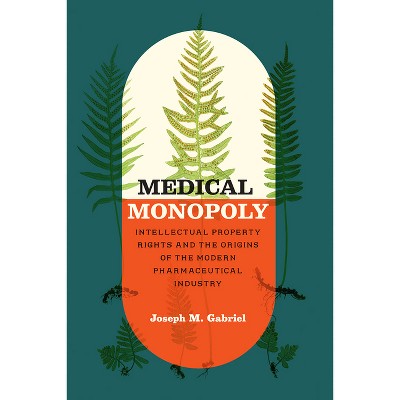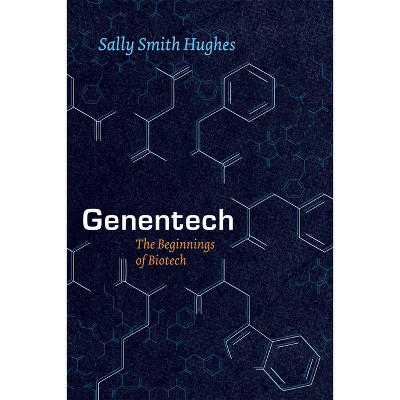Sponsored

Gems and the New Science - (Synthesis) by Michael Bycroft (Hardcover)
New at target
$45.00
Pre-order
Eligible for registries and wish lists
Sponsored
About this item
Highlights
- The first book-length history of gems in early modern science offers a thought-provoking new take on the Scientific Revolution.
- About the Author: Michael Bycroft is associate professor in the history of science and technology at the University of Warwick.
- 336 Pages
- Science, History
- Series Name: Synthesis
Description
About the Book
"The first book-length history of gems in early modern science offers a thought-provoking new take on the Scientific Revolution. In Gems and the New Science, Michael Bycroft argues that gems were connected to major developments in the "new science" between the sixteenth and nineteenth centuries. As he explains, precious and semi-precious stones were at the center of dramatic shifts in natural knowledge in early modern Europe. They were used to investigate luminescence, electricity, combustion, chemical composition, and more. They were collected by naturalists, measured by mathematicians, and rubbed, burned, and dissolved by experimental philosophers. This led to the demise of the traditional way of classifying gems--which grouped them by transparency, color, and locality--and a turn to density, refraction, chemistry, and crystallography as more reliable guides for sorting these substances. The science of gems shows that material evaluation was as important as material production in the history of science. It also shows the value of seeing science as the product of the interaction between different material worlds. The book begins by bringing these insights to bear on five themes of the Scientific Revolution. Each of the subsequent chapters deals with a major episode in early modern science, from the expansion of natural history in the sixteenth century to the emergence of applied science early in the nineteenth century. This important work is not only the first book-length history of the science of gems but also a fresh interpretation of the Scientific Revolution and an argument for a new form of materialism about science"-- Provided by publisher.Book Synopsis
The first book-length history of gems in early modern science offers a thought-provoking new take on the Scientific Revolution. In Gems and the New Science, Michael Bycroft argues that gems were connected to major developments in the "new science" between the sixteenth and nineteenth centuries. As he explains, precious and semiprecious stones were at the center of dramatic shifts in natural knowledge in early modern Europe. They were used to investigate luminescence, electricity, combustion, chemical composition, and more. They were collected by naturalists; measured by mathematicians; and rubbed, burned, and dissolved by experimental philosophers. This led to the demise of the traditional way of classifying gems--which grouped them by transparency, color, and locality--and the turn to density, refraction, chemistry, and crystallography as more reliable guides for sorting these substances. The science of gems shows that material evaluation was as important as material production in the history of science. It also shows the value of seeing science as the product of the interaction between different material worlds. The book begins by bringing these insights to bear on five themes of the Scientific Revolution. Each of the subsequent chapters deals with a major episode in early modern science, from the expansion of natural history in the sixteenth century to the emergence of applied science early in the nineteenth century. This important work is not only the first book-length history of the science of gems but also a fresh interpretation of the Scientific Revolution and an argument for using a new form of materialism to understand the evolution of science.Review Quotes
"Gems and the New Science is an indispensable companion for anyone looking to understand the historical development of the science of gemstones between the European Renaissance and the early nineteenth century. Bycroft has written a book that is meticulously researched, erudite, and unpredictable in the best of ways. The introduction of original concepts such as transmaterialism and the centrality given to material evaluation offer potential for future research that attempts to look at histories of science in relationship to physical objects. Gems and the New Science is an ambitious work that not only offers a better understanding of how gemstones have been understood historically by scientists, jewelers, and cutters, but also manages to convince the reader of the important role played by this process of understanding in the development of European, post-Aristotelean science."--Tijl Vanneste, author of "Blood, Sweat and Earth: The Struggle for Control over the World's Diamonds Throughout History"
"Gems--sparking, brilliant, and colorful--were central to the early modern world. Training his eye on gem cutters, merchants, chemists, and experimental philosophers, Bycroft shows how their hands and minds interacted to shape the science of gems in Europe between 1500 and 1800. As brilliant and multifaceted as the gems, Bycroft's book uses the category of gems to show that science is always as much about evaluation as it is about production and that science remains only one way of judging value among many."--Sven Dupré, coeditor of "Gems in the Early Modern World: Materials, Knowledge, and Global Trade, 1450-1800"
"In his comprehensive and magisterial account, Bycroft offers a powerful argument that gems were at the heart of the development of modern science. Gems and the New Science persuasively shows how precious stones spurred the comparative analysis and evaluative judgment of materials, facilitating the cooperation of different artisanal communities of expertise in the process. Revising current interpretations of materialism, this incisive book offers a bold and ingenious theoretical intervention into debates about the production and evaluation of knowledge claims in the Scientific Revolution."--Dániel Margócsy, author of "Commercial Visions: Science, Trade, and Visual Culture in the Dutch Golden Age"
About the Author
Michael Bycroft is associate professor in the history of science and technology at the University of Warwick. He is the coeditor of Gems in the Early Modern World: Materials, Knowledge, and Global Trade, 1450-1800.Dimensions (Overall): 9.0 Inches (H) x 6.0 Inches (W)
Weight: 1.0 Pounds
Suggested Age: 22 Years and Up
Number of Pages: 336
Genre: Science
Sub-Genre: History
Series Title: Synthesis
Publisher: University of Chicago Press
Format: Hardcover
Author: Michael Bycroft
Language: English
Street Date: February 24, 2026
TCIN: 1006384690
UPC: 9780226644608
Item Number (DPCI): 247-29-6977
Origin: Made in the USA or Imported
If the item details aren’t accurate or complete, we want to know about it.
Shipping details
Estimated ship dimensions: 1 inches length x 6 inches width x 9 inches height
Estimated ship weight: 1 pounds
We regret that this item cannot be shipped to PO Boxes.
This item cannot be shipped to the following locations: American Samoa (see also separate entry under AS), Guam (see also separate entry under GU), Northern Mariana Islands, Puerto Rico (see also separate entry under PR), United States Minor Outlying Islands, Virgin Islands, U.S., APO/FPO
Return details
This item can be returned to any Target store or Target.com.
This item must be returned within 90 days of the date it was purchased in store, shipped, delivered by a Shipt shopper, or made ready for pickup.
See the return policy for complete information.











